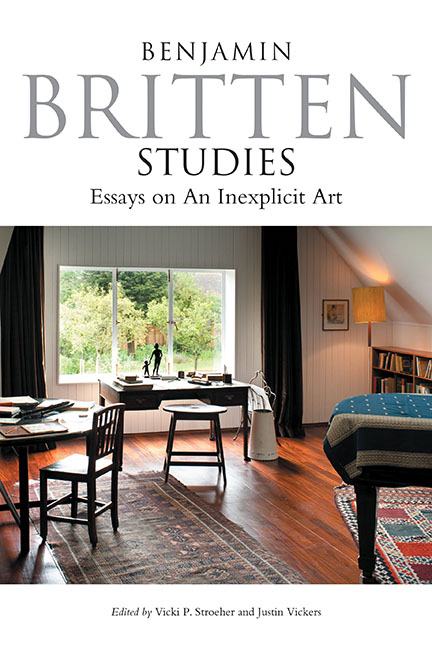Book contents
- Frontmatter
- Dedication
- Epigraph
- Contents
- List of Illustrations
- List of Musical Examples
- List of Tables
- Notes on Contributors
- Acknowledgements
- Bibliographic and General Abbreviations
- Editors’ Preface
- Introduction: Writing About Britten
- Part I Identity: Exile and Return
- Part II Britten and Intimacy
- Part III Britten and His Craft
- Part IV Britten and Matters of Practicality
- 12 Reviving Paul Bunyan
- 13 Striking a Compromise: Britten, British Publishers, Soviet Theaters, and the Premieres of Peter Grimes and The Prince of the Pagodas
- 14 From Boosey & Hawkes to Faber Music: Britten Seeks a “Composer's Place”
- Conclusion and Epilogue
- Works Cited
- Index
12 - Reviving Paul Bunyan
from Part IV - Britten and Matters of Practicality
Published online by Cambridge University Press: 25 October 2017
- Frontmatter
- Dedication
- Epigraph
- Contents
- List of Illustrations
- List of Musical Examples
- List of Tables
- Notes on Contributors
- Acknowledgements
- Bibliographic and General Abbreviations
- Editors’ Preface
- Introduction: Writing About Britten
- Part I Identity: Exile and Return
- Part II Britten and Intimacy
- Part III Britten and His Craft
- Part IV Britten and Matters of Practicality
- 12 Reviving Paul Bunyan
- 13 Striking a Compromise: Britten, British Publishers, Soviet Theaters, and the Premieres of Peter Grimes and The Prince of the Pagodas
- 14 From Boosey & Hawkes to Faber Music: Britten Seeks a “Composer's Place”
- Conclusion and Epilogue
- Works Cited
- Index
Summary
In 1976, journalist Martin Cooper from The Telegraph proclaimed, “No composer is more English than Britten,” while marveling at the composer's “uncanny ability to identify himself with other cultures.” Still, it came as a surprise to many critics when Britten decided to open the 1976 Aldeburgh Festival with Paul Bunyan, an American operetta co-written with W. H. Auden. Although it had been whispered about for years – at the 1945 premiere of Peter Grimes, rumors circulated that this was not Britten's first opera – the work had not been published or staged since its failed New York premiere. Now promoted as a musical, Paul Bunyan was greeted with benevolent amusement by the press; as one journalist put it, “‘an American Britten’ is a boggling thought.” Similarly, scholarship on the revival of Paul Bunyan has tended to consider Britten's return to the operetta as less of a serious artistic endeavor and more of a pet project, motivated by the same personal considerations that inspired him to undertake the revision of his juvenilia toward the end of his life. But this treatment of Paul Bunyan – and of so many of Britten's revised works – overlooks how the composer carefully curated these reborn pieces, presenting them in particular venues, publications, and media in ways that helped to consolidate his reputation in his later years. During the 1960s and 1970s – a period when Britten is said to have retreated to Aldeburgh – these supposedly personal utterances were part of a larger intervention into present-day culture. Using Paul Bunyan as a case study, this chapter traces how, for Britten, revision was not just a musical process, but also a historical practice, whereby the composer sought to involve himself in contemporary debates about the development of music and theater, all the while setting the terms of his legacy.
Britten's former collaborator and co-creator of Paul Bunyan, W. H. Auden, once reflected that “what every author hopes to receive from posterity – a hope usually disappointed – is justice.” In revising Paul Bunyan in the twilight of his life, Britten showed us how he wished to be remembered.
- Type
- Chapter
- Information
- Benjamin Britten Studies: Essays on An Inexplicit Art , pp. 350 - 376Publisher: Boydell & BrewerPrint publication year: 2017

